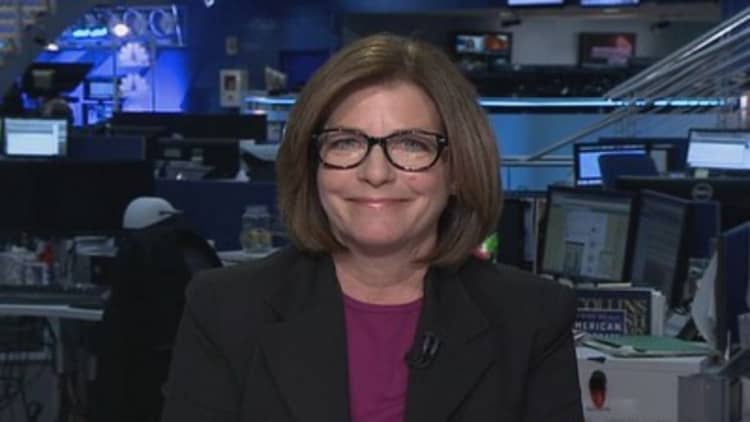
Companies in everything from food service to metal fabrication are expected to have added slightly more workers in April than March, and economists now expect the pace of job growth to resume its pre-polar vortex trend.
Economists expect to see 210,000 non-farm payrolls added in April, and an unemployment rate of 6.6 percent, according to Thomson Reuters. The report, expected at 8:30 a.m. ET Friday, compares with 192,000 in March and a rate of 6.7 percent.
"I actually think the risks are for a bigger number," said Mark Zandi, chief economist at Moody's Analytics. Weather, including the extremely frigid air that descended on North America from the so-called polar vortex, derailed job growth in December, January and February from its roughly 200,000 pace. "We're back on the high-speed rail line again."
Zandi expects 220,000 jobs were added in April, in line with ADP's private-sector payroll report of the same number. Moody's compiles the ADP numbers.
But economists are split on whether the jobs report will be the beginning of period of acceleration that will result in stronger reports this year of 250,000 or more.
The April jobs report comes at a time when markets are still sorting out whether it was just winter weather or a different source of economic weakening that turned first-quarter GDP negative.
Read MoreLoeb's Third Point warns of 'bubblelicious' market
The government's advance reading on GDP Wednesday showed growth of 0.1 percent, about a percentage point below expectations. But weaker construction data Thursday reduced economists forecast for that number to a slightly negative 0.2 percent.
"The market is prepared for a number with a 200 handle. My projection basically assumes or incorporates a reversion to the trend that was in place before the really troubling winter weather—the winter of the polar vortex," said Ward McCarthy, chief financial economist at Jefferies. He expects job growth of 230,000.
McCarthy said the first-quarter number is not worrisome since weakness was expected, and other data has been showing an improved outlook for the second quarter, which he thinks will grow at a 3.3 percent pace. "I don't think it's a new phase. It's a return to the phase we had entered into before the winter kind of derailed things. You are getting more of a critical mass. We are in an expansion phase at least for private-sector labor," he said.
Economists point to an important event in March where the job market went from recovering to expanding for the first time since the recession.
That was when private payrolls finally returned to their pre-recession peak—with the restoration of the more than 8.9 million jobs lost in the recession.
Read MoreCashin: Here's where Nasdaq's run could stumble
"It took a little over six years to go from the early 2008 labor market peak to a new peak. That's a big milestone, but this cycle has been characterized by little mini cycles where payrolls accelerate and little mini cycles where payrolls decelerate," he said.
McCarthy said he does not expect the number to get substantially bigger until average hourly earnings start increasing more.
"Liftoff will come when you see average hourly earnings grow at a significantly faster pace," he said. Markets are honed in on wage growth because the Fed is focused on that. Wages are expected to rise 0.2 percent.
The jobs report is key because it is one of the most important data points for the Fed in policy making. But while April's employment report is important, the Fed will have the May report to also consider at its next policy meeting in June.
Watch: 'Sell in May' won't work: Citi's Tobias Levkovich
Stocks meandered Thursday, after the Dow broke into record territory Wednesday. The Nasdaq was the standout, rising 12 points to close at 4,127, while the Dow was down 21 points at 16,558. The was off less than a point at 1,883.
The big mover was the bond market, where 30-year note yield temporarily slipped to 3.4 percent, the lowest since June 2013 and the 10-year note yield briefly broke below 2.60 percent, the bottom of a range it's been in since January.
Traders blamed short covering and repositioning but also some effect from the data, including construction spending number, which was 0.2 percent compared with expectations of 0.5 percent.
—By CNBC's Patti Domm. Follow her on Twitter @pattidomm.


